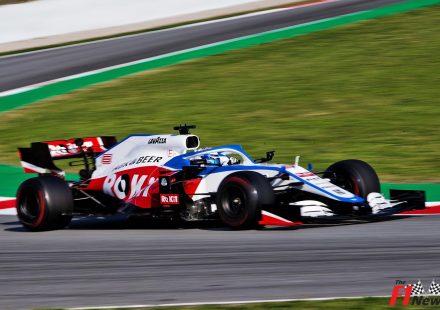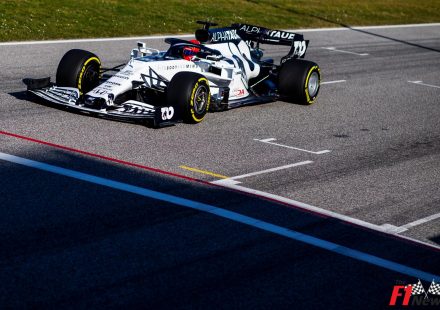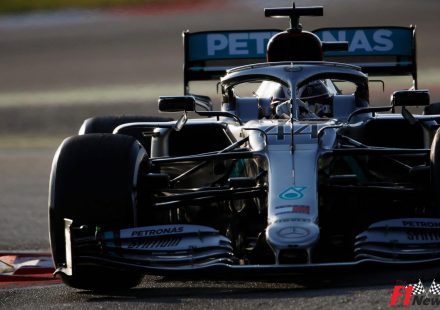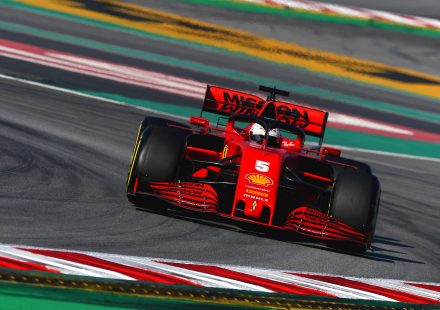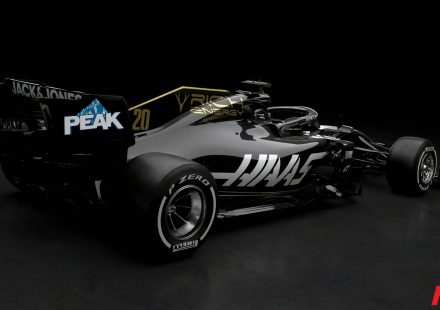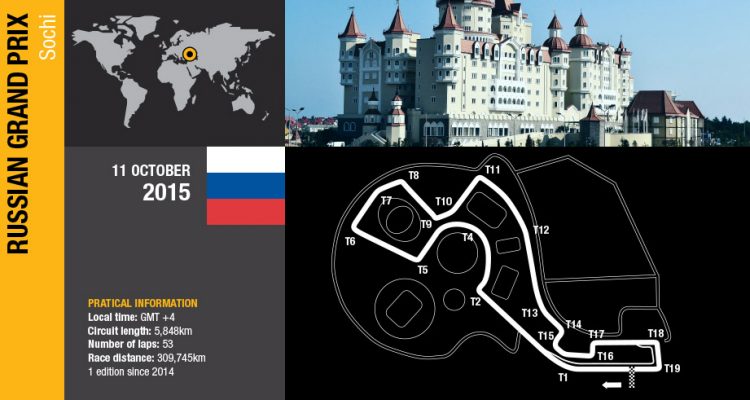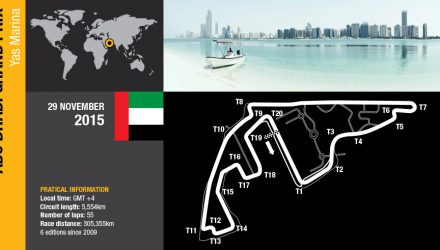RÉMI TAFFIN, DIRECTOR OF OPERATIONS
In the last two races we have been a lot closer to the performance potential of the power unit. In qualifying the Red Bulls have been noticeably closer to pole and Toro Rosso regular Q3 challengers. We’ve unlocked some greater driveability and this, coupled with the increased reliability, has given a net step forward on track, as we saw with the podium in Singapore.
Russia is a mix of Singapore and Japan, with the tight corners of the former and the flowing sections of Suzuka. As a result, we are confident that we can continue our run in Sochi. We are looking forward to getting going and pushing on with the job in hand.
RENAULT 2015 FAST FACTS
The track skirts around the arena used for the 2014 Winter Olympics. It passes through the Medals Plaza and round the Bolshoi Ice Dome and close to the main Olympic village and skating centre.
The track is incredibly wide. At its narrowest it is 13m and 15m at its widest, or approximately eight men’s skis placed end to end.
The Hermann Tilke-designed Grand Prix track is the third longest on the F1 calendar this year after Spa-Francorchamps and Silverstone. The length of the circuit, plus its stop-start nature, means fuel consumption is one of the highest of the season.
The track is rarely used over the year so there is little rubber on the tarmac and tyre wear can be very unpredictable. Engine engineers can help reduce tyre wear by reducing wheelspin in the slow corners with accurate power delivery.
The weather in Sochi last year was around 20°C on average, with low humidity. In climate, it is actually very similar to Austin although it is on the same latitude as Toronto, Nice and the Gobi Desert.
FOCUS ON…RUSSIAN GRAND PRIX LOGISTICS
Although geographically still in Europe, Sochi is around 3,500km from Renault Sport F1’s headquarters in Paris and, therefore, treated as one of the ‘flyaway races’. Instead of the reassuring comfort of bespoke trucks carrying a wealth of equipment, teams send the kit as they would for races in Asia or the United States. This means a combination of sea and air freight and a complicated logistics plan.
Renault Sport F1’s security and logistics manager, Jean-Pierre Raymond, explains the intricacies of preparing for the third of third of seven ‘overseas’ races that end the 2015 season.
‘Russia is technically a European country, but the distances are so long from the teams’ bases that we have to prepare everything as we would for one of the flyaways, such as Australia. We send two consignments of equipment, one by sea freight and one by air freight.
‘Actually when I say sea freight, it’s not strictly accurate. Normally the standard consumables go into containers and onto cargo boats, but for this race it was sent on several trucks by road. Around 300kg of kit was sent this way. It left Paris for Italy and then onto Russia at the start of September to be delivered to the circuit the week before the race.
‘Then there is a further six tonnes of air freight, which includes the power unit parts and ancillaries. To save costs, the freight is sent from Paris to the first flyaway – this year in Singapore – and then it continues on to the next rounds without returning to Europe. This means we have to anticipate requirements for seven races in one go! This freight leaves Japan on the Tuesday after the race and arrives in Sochi on the Monday before the Russian Grand Prix.
‘It’s not easy, and requirements may change according to new developments, so there is an opportunity to send another consignment by air freight from Europe direct to Russia.
‘Alongside the normal challenges of an overseas race, one of the main time constraints of sending equipment to Russia is the paperwork. Everything needs to be translated into Russian so we consult a specialist agency to help us file the dossiers.
‘Personnel logistics in Russia are similarly complicated. Everyone needs a visa to enter the country, which takes some time, but the procedure has been simplified this year and we were able to get the paperwork done very early. There are no direct flights from Paris to Sochi so it takes a long time to get there; around 12 hours door to door, which is the same as a flight to Japan!
When we arrive we stay in the hotels around the circuit that were specially built for the Olympics in 2014 and it’s fairly easy, to be honest, although there are a lot more security checks over the weekend than normal. Each car has to be checked before entering the circuit and there is more police than we see usually.
‘The Grand Prix is relatively straightforward when we get there but that is due to the level of planning we execute before the race. There’s around 50% more work that goes into it than a normal race weekend.’
POWER UNIT DETAILS
 ICE
ICE
The Sochi racetrack is a permanent course but with the characteristics of a street circuit. The barriers are close and the track passes next to buildings in a series of tight second and third gear turns.
Sochi may resemble a street track in look, but, with two long straights and one high-speed turn top speed will be around 330kph while the average speed is over 200kph. Approximately 60% of the lap is spent at wide open throttle, well above the ‘traditional’ street average.
The lap opens with a short burst of wide open throttle. The pit straight blends into a right-hand curve where the driver will keep the speed until the braking point for Turn 2, giving a total full throttle time of 15 seconds.
TURBOCHARGER
Sochi is a relatively easy race for the turbo. The ICE is only stressed twice over the lap and the tight corners are spread throughout the 5.853km track. Turbo response is important, but no more difficult to calibrate at this race than at a ‘regular’ track such as Barcelona or Silverstone.
MGU-K
With fuel consumption high, the focus is to recover as much energy as possible under braking. Of the 18 corners, nine are large stops so the MGU-K should be able to recover enough energy to balance out the thirsty ICE’s fuel consumption.
Sector two is very point-squirt, with right-angled turns that give the MGU-K plenty of chance to recover energy. Turns 2 and 4 are the hardest stops and the car speed drops to 120kph, with each braking event around 2.0 seconds.
The back of the circuit has similar corners, such as Turn 13 where the speed drops to 85kph.
MGU-H
The radial Turn 3 that rounds the Olympic arena is taken at full throttle. This sustained throttle use will give the MGU-H a steady stream of exhaust from which it can recover the lost heat energy.
Another period of significant full throttle is the back straight, where the driver is on the pedal for 12secs.

